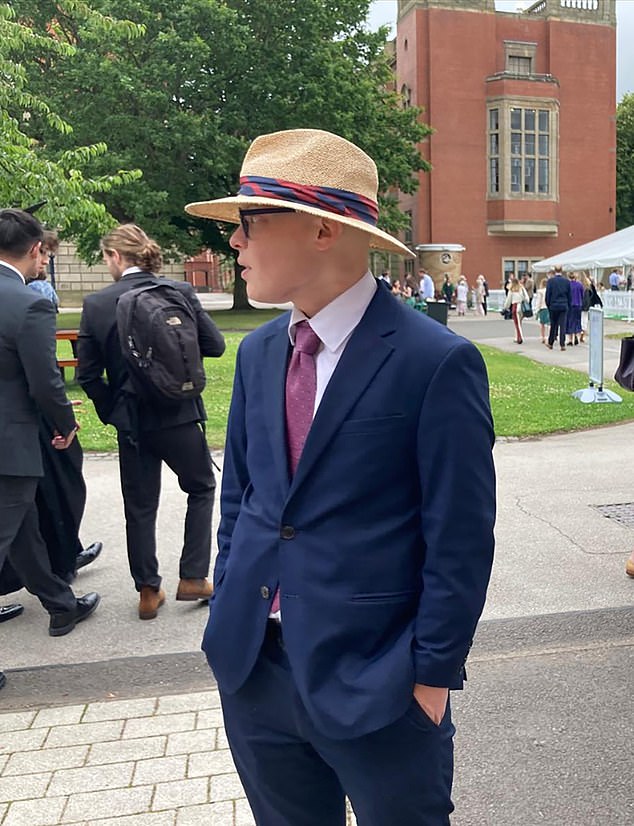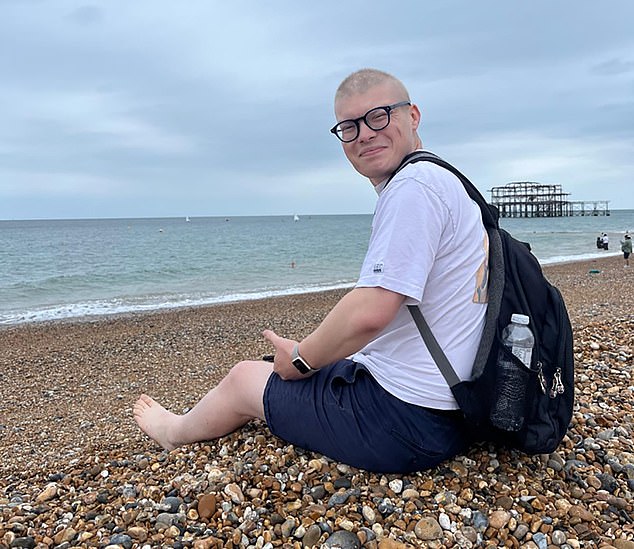When I look at other people in their early 20s, I see a lot of themes. Some are travelling, some are training for marathons and many are knuckling down and focusing on their careers.
At the beginning of 2024, when I moved from Sheffield, where I had been a student, to London, I was in the latter camp. I’d started a new job, moved in with a friend from university and was excited for the future.
Then everything changed. A few months into my new life, I was diagnosed with cancer.
Back in February last year, I noticed a lump about the size of a grape in my neck, just below the jaw on the right side, so far back it was almost in line with my ear. It was hard but not painful or tender.
I didn’t panic, but resolved to keep an eye on it. I googled what it could be – partly to reassure myself it was nothing, partly from a fear it could be something.
I found out it was likely a swollen saliva gland or lymph node. Far more unlikely was lymphoma, a type of blood cancer. But that was only really a worry if there were other symptoms, such as night sweats or weight loss, which I didn’t have, so still I didn’t panic.

At no point had I thought, as a 23-year-old, that I could have cancer, Joshua Thory-Rao writes
Around this time I developed a persistent sore throat. I felt drained, constantly tired, sometimes along with a slight fever, which I put down to a cold or a bug. And of course it was natural I should feel tired – I was working hard, staying out late at weekends and trying to explore a new city.
But after the lump failed to go down over the following weeks, I went to see my GP. They noticed I had a swollen tonsil and said the lump may be a lymph node that had swollen to fight an infection. I was given antibiotics and told to come back if the lump remained.
I left relieved it wasn’t anything serious. It was tonsillitis, with a cure as simple as antibiotics.
But when the tablets didn’t work – after a week the lump was still there – my GP referred me to Guy’s Hospital in south London for an ultrasound. Based on the results, I was referred straight to the haematology clinic where I had blood tests, two biopsies and a PET scan, which is similar to an X-ray.
On April 10, two months after I first noticed the lump, I was given my diagnosis: Stage 2 non-Hodgkin lymphoma.
Although I knew lumps have an association with cancer, and I knew what I was being tested for was cancer, at no point had I thought, as a 23-year-old, that I could have cancer.

It took time to get over the shock and accept I had the disease, Joshua Thory-Rao writes
I’d convinced myself the tests were being done as a way of proving there was nothing wrong.
Cancer was something that happened to other people – people who were much older than me.
It also came as a huge shock to my family – it was very hard for us all to come to terms with. But as is so often the case with cancer, we had experience of it.
About ten years ago, my mum had breast cancer. Having her to support me – and my dad who had been at her side through it – made it easier, in many ways.
In truth, cancer – once thought of as primarily a disease of ageing – is becoming ever more common in younger people. Cases of non-Hodgkin lymphoma have risen by more than 80 per cent since the 1970s, and doctors are mystified as to why. Cancers of the colon, breast and prostate are also increasing in the under-50s.
Overall, cancer in 25 to 49-year-olds is up 22 per cent over the past three decades – a greater change than in any other age group. Researchers are working hard to find out why, with theories including over-use of medication, increasing obesity rates and diets high in junk food.
But none of those applied to me, and I still have more questions than answers.
Luckily, from the moment of my diagnosis, the prognosis was good. My consultant had a positive attitude, saying they were looking to cure me and that the chances of going into remission after chemotherapy were very high.
It took time to get over the shock and accept I had the disease.
But as I approached treatment, I began to realise the true cost of cancer – the destruction of the normality of my life. It was a better outcome than dying, of course, but came with challenges – a sense of being stopped in my tracks, my life put on hold, of being marked out, of being left behind by my friends and peers.

As I approached treatment, I began to realise the true cost of cancer – the destruction of the normality of my life, Joshua Thory-Rao writes
My chemo went smoothly. I suffered fatigue and the loss of pretty much all my hair, but I got through it with the support of friends, family, colleagues, medical staff and charities such as Teenage Cancer Trust and Young Lives vs Cancer.
Yet even now, six months post- treatment, I don’t feel the same as I did before my diagnosis.
Even for a cancer deemed very treatable, its damage was considerable. I felt, and still feel, like it separated me from others my age. I had watched as their worlds moved on, while I felt stuck. They were living their lives, while I was sitting around, not able to do anything. Even now, back at work and seemingly back to normal, I struggle with brain fog and fatigue – the after-effects of chemotherapy.
But I learned an incredible amount about myself from my experience. Cancer always takes a toll, but I’m just glad I got that lump checked out so it could be caught at such an early stage.











